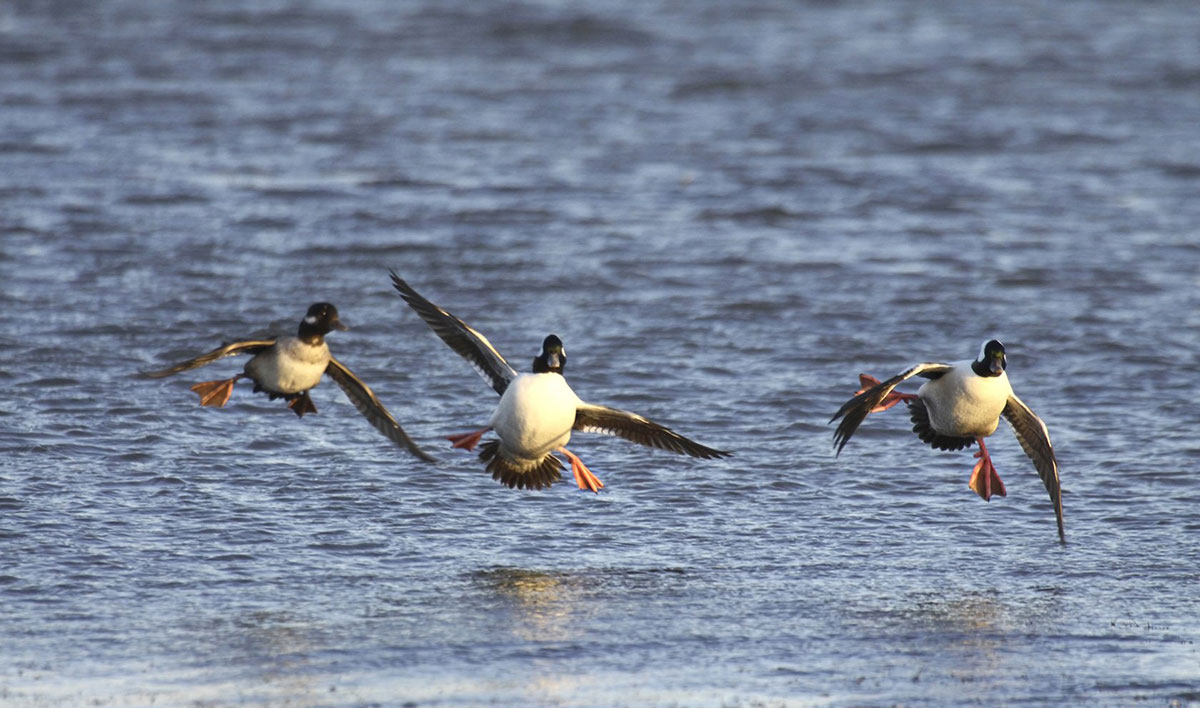Migration Alert: Chesapeake Bay Hunters and Waterfowl Managers Optimistic
Dec. 1, 2023 – Atlantic Flyway – Chesapeake Bay Region
Dec. 1, 2023 – Atlantic Flyway – Chesapeake Bay Region

A promising early duck season in the Chesapeake Bay region was bolstered by much-needed rainfall that replenished small streams, ponds, swamps, and other pockets of habitat often sought by migrating waterfowl. The precipitation came just as the first splits were ending in Virginia and Maryland.
Based on reports from hunters, the Virginia Department of Wildlife Resources’ (DWR) Hog Island complex produced some of the best gunning in years during the first two splits. John Randolph, the longtime manager at Hog Island, says a good mix of birds moved in between the early youth hunt in October right up until the end of the second split. "This is the best hunting I can remember in a long time," Randolph says.
Ben Lewis, the DWR’s waterfowl biologist, agrees that Virginia hunters have been faring well. "I think, for the most part, hunters had a good middle split in Virginia," Lewis says. "We had reports of good to great numbers of wood ducks and green-winged teal, with a few larger puddle ducks mixed in. I think we’re shaping up for a good final split of the season."
Lewis cites good duck production this year in eastern Canada, coupled with early cold temperatures north of the Chesapeake Bay, for fueling the push. "We need some more [cold weather and birds], but we still have time, and the migration is progressing nicely for this time of year," he says. "We have a good number of Canada geese, and tundra swans arrived in force on the full moon after Thanksgiving. If the stars align, hopefully we will be in for a good December and January."
Across the bay, in Maryland, reports are not quite as rosy as in the Old Dominion. DU Manager of Conservation Programs Ed Farley reports seeing "good numbers" of birds, but they "seem to be stale," flying early and high, indicative of ducks that know the area well.
"I saw several large flocks of greenwings, some mallards, local black ducks, and a few wigeon," Farley reports, adding that he wonders if the migration in his area might be a little later than usual.
The Eastern Shore suffered unprecedented drought conditions this year. "I can't stress enough how dry it is," says Josh Homyack, the Maryland Department of Natural Resources’ waterfowl project manager. "There is some soil moisture but very little natural surface water anywhere. These last few rains helped, but we’ve got a long way to go."
Marcia Pradines Long, the US Fish and Wildlife Service’s Chesapeake Marshlands complex leader, says refuge staff successfully reactivated a pump about five days before the late November rains arrived. The pumped water helped soak the ground to boost retention of timely rainfall.
"I’ve never seen it so dry before. At least now we have the option to assist if this happens again," Pradines Long says.
Homyack says aerial surveys in mid-November found large numbers of ducks on the Susquehanna Flats at the top of the bay and some of the DNR’s tidal impoundments. "I have heard of decent wood duck numbers, and Easter Shore Canada goose numbers are fair. I'm starting to see a few divers, mostly scaup and ruddy ducks, and have heard reports of good sea duck numbers off the mouth of the Choptank River."
DU Mid-Atlantic Development Director Jake McPherson has gotten around both sides of the massive bay this year, hunting several times in Maryland and Virginia during the first two splits. McPherson’s Maryland hunts yielded mixed bags of wood ducks, teal, mallards, black ducks, pintails, and shovelers.
"I hunted before the rains. It seemed to me that the duck numbers were good, but the birds were very concentrated in places that had water," McPherson says. "Goose numbers in Maryland also seemed pretty good for November."
In short, it’s shaping up to be a typical Chesapeake Bay waterfowl season relative to recent years. A little more rain will help in terms of habitat but will also likely disperse ducks. Hunters who can access secluded pockets of marsh should experience good shooting. The early Christmas wish for Chesapeake area waterfowlers is for the Northeast and Midwest to receive frigid weather to send more waterfowl south in time for a strong finish to the season.
Stay up to date with the latest migration information.